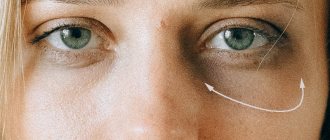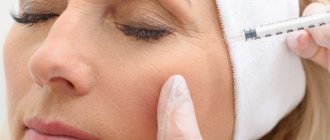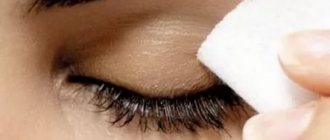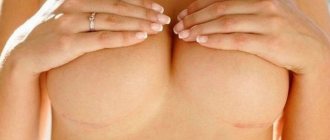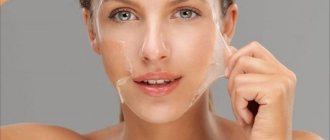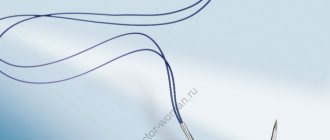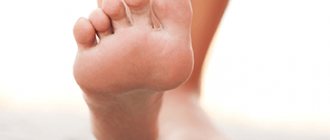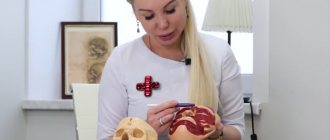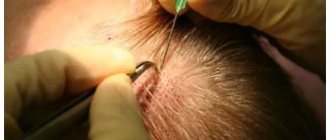Botox is a botulism neurotoxin that has undergone purification and pre-treatment and has a fairly weak concentration. The cosmetic effect of the drug was discovered in 1993, and two years later it became widely used not only in cosmetology, but also as a component of the treatment of many diseases.
Botox injections are a non-surgical corrective option for smoothing and eliminating expression lines and age-related wrinkles. In order to understand how Botox works, you need to understand the principles of the injection mechanism.
How does Botox work after injection?
Botox is a cosmetic drug that contains weakened botulinum toxin. This substance is produced during the life of the bacterium Clostridium botulinum. Scientists have learned to use the special properties of botulinum toxin in cosmetology practice, with the goal of radical rejuvenation of the face and neck.
Botox is administered through subcutaneous injections into the area where expression lines are concentrated - the most unpleasant primary sign of aging. Penetrating into the fibers of the facial muscle, botulinum toxin blocks the mechanism of neuromuscular transmission, causing inhibition of a particular muscular structure of the face. Why is this necessary? Unlike other muscles, the facial muscles are in close contact with the skin, ensuring its tension. When a muscle is exposed to a toxin, it completely relaxes, which leads to the smoothing of the skin attached to it. Visually, this is manifested by the complete smoothing of facial wrinkles and skin creases of varying depths, which transforms and rejuvenates the patient’s face.
As a result of such a radical effect, a person loses the ability to control the muscle. However, contrary to popular belief, the face does not look like an artificial mask at all, which is due to the selective technique of administering the drug. Simply put, the static nature of one individual muscle is completely unnoticeable against the background of active facial movements of the surrounding facial muscles. This is why Botox injections can only be done in a good clinic. Only an experienced cosmetologist will accurately select the area of injection of the drug to achieve the desired result. The doctor performing botulinum therapy must undergo special training and have good experience, otherwise the result may be disastrous.
Speaking about the mechanism of action of Botox after administration, one cannot fail to note the fact that botulinum toxin has temporary activity. In the process of metabolism and enzymatic reactions, the toxin is gradually eliminated from the body, weakening the effect on the muscles and returning the former facial expressions. This can be considered both a positive feature, because the patient does not have to worry about the irreversibility of the effect, and a negative one, due to the need to re-administer the drug to maintain the anti-aging effect.
How much drug should be administered
Botulinum toxin is measured in units of action (AU). This unit of measurement shows the biological activity of a substance. Determines the amount of drug required to block nerve endings.
When calculating, the age and condition of the patient’s skin, the depth of wrinkles, and the treatment area are taken into account. The doctor determines the activity of facial muscles and the condition of muscle tissue.
Average doses of botulinum toxin for different zones (in units):
- between the eyebrows - 10-25;
- wrinkles in the eye area - 5-15;
- folds on the neck - 20-60;
- wrinkles on the forehead - 10-15;
- purse-string wrinkles - 2-5.
When using the toxin for the first time, minimal doses are administered to avoid a mask effect after the procedure.
Botox for face
Where is Botox injected?
Botox injections are performed using ultra-thin needles, which avoids trauma to the skin and unsightly specific marks. The drug, as already mentioned, is injected into the area of localization of pronounced facial wrinkles.
- Forehead. Most often, injections are made in the frontal area, since Botox is effective in combating vertical wrinkles between the eyebrows, as well as smoothing deep horizontal frontal furrows;
- Eyes and lips. The introduction of Botox into the periorbital and perioral plane of the face will eliminate small expression wrinkles in the corners of the eyes and lips, which are popularly called “crow’s feet”;
- Neck area. Botulinum toxin therapy for the neck is rarely used, but with sufficient qualifications of the doctor, it can maximally correct age-related changes in the neck muscles;
- Nose. So-called “anger lines” on the bridge of the nose can also be corrected with botulinum injections.
Much less often, beauty injections are used to correct facial wrinkles in the lower third of the face, since in this case there is a risk of drooping (sagging) of the muscles that hold the facial contour. That is why the qualifications of the specialist who carries out this procedure are very important here.
Such injections do not cause discomfort to the patient himself, due to the fact that the skin is pre-treated with a local anesthetic solution. In the technique of botulinum injections, it is very important that the specialist correctly determines the area of injection of the drug, since the effectiveness of the procedure will ultimately depend on this factor. In order to eliminate the possibility of error, the doctor may ask the patient to grimace and twist during the procedure in order to determine the area where the largest number of facial folds of skin accumulate.
What determines the duration of the procedure?
How long the hair Botox procedure lasts depends on external factors and parameters, so you can first influence the acceleration of the service in the salon by facilitating the technology.
To reduce how long hair Botox takes, first pay attention to the choice of cosmetology in which you plan to perform the technology. To do this, read reviews of the salon on third-party sites, find out reviews from friends, choose a cosmetologist to whom you will entrust your hair. You will increase the likelihood of a good result and quick completion of the work.
When performing Botox for hair, how long the procedure takes depends on other factors:
- Length and thickness of hairs. The longer and more magnificent they are, the more time the cosmetologist spends on washing the head, applying and uniformly distributing the reconstructive composition.
- Initial health of the strands. It is easier to apply the solution to smooth, healthy hairs than to those with kinks or split ends.
- The methodology used. The hot method takes longer than the cold method, since it involves additional heat treatment, which is why the indicator of how long the Botox procedure for hair lasts increases.
- Competence of a cosmetologist. Sloppy and inconsistent work increases the duration of the session, reducing the effectiveness of the technique.
- Session number. The last visits in the course go faster than the first ones, since at this time a product is already attached to the vegetation, which needs to be added and adjusted. Time can vary by 1.5 times.
The compositions used in cosmetology vary. Often, the master needs to pre-mix several components, achieving the desired consistency, and then distribute the product over the strands. Preparation of the compositions can take up to fifteen minutes.
If you do hair botox, how long the procedure takes, the master can tell you after the first consultation. He will evaluate the condition of your hair, which is what the average duration of work in a beauty salon is based on.
Knowing what factors influence the duration of the service, you can speed up its provision:
- First make sure that there are no restrictions for health reasons, do a test for the presence of an allergic reaction to the solutions used.
- Pay attention to the choice of salon and cosmetologist who will work with your hair.
- It is recommended to make an appointment for your first salon visits on weekends, as the visit takes a lot of time. However, at the end of the course you can work on weekdays.
- If you are going to cut your locks, do it before Botox. You will reduce the length of the surface being treated, which will reduce the price of the session and speed it up.
If there are other factors that may increase the duration of the visit, please notify the specialist in advance. Otherwise, the cosmetologist may be in a hurry to meet standard work hours in order to see the next client.
When does Botox start to work after injections?
Many patients, before this cosmetic procedure, are concerned about the question of how long it takes for Botox to work after introducing the drug under the skin. This topic is relevant for those clients of a cosmetologist who are sure that they can leave the clinic only when the effect of Botox appears. In fact, there is no immediate blockade of the neuromuscular motor impulse after administration of the drug. Typically, noticeable results gradually increase over 3-5 days after injections.
Today, the cosmetology market also offers a popular analogue of Botox – the French drug Dysport, which exhibits a pronounced effect already on the first day after the procedure.
At the same time, when Botox begins to act, it is not at all necessary to remain under the supervision of a doctor, since the effect can be gradually adjusted over three months, after the first use of botulinum therapy, and the most expressive final result can be achieved only after 2 weeks. After this period, it is recommended to undergo an examination with your cosmetologist. The doctor will evaluate the result and, if necessary, “fill in” the missing dose of the drug. Thus, your cosmetologist accurately selects your dose of Botox. It depends how long it takes for Botox to start working, primarily on the individual characteristics of the patient’s metabolism.
Advantages and disadvantages
The results of injections with botulinum toxin are noticeable almost immediately. The procedures are safe because the toxin is administered in minimal doses. If all rules are followed, muscle mobility is not impaired. After the toxin has completed its effect, the oval of the face does not float and returns to a position that corresponds to age.
The injections are given intramuscularly and are therefore painless. But if the pain threshold is low, the cosmetologist applies a gel with an anesthetic to the skin. On average, the procedure lasts 10 minutes.
Botulinum toxin can be combined with hyaluronic acid fillers. When correcting different zones - simultaneously. If it is necessary to eliminate wrinkles in one area, Botox is first injected, after 3 weeks injections with hyaluronic acid are made.
Disadvantages of botulinum therapy:
- short-term action;
- presence of restrictions;
- Some people are immune to Botox due to previous illnesses or genetic factors.
Botulinum toxin can be injected at any age to eliminate wrinkles and deep folds on the face and neck. But if the procedure is performed for the first time after 55-60 years, compensatory hypertonicity may develop. Therefore, the cosmetologist must take into account the individual characteristics of each patient and all restrictions.
How long does the effect of Botox last?
How effective Botox is is perhaps one of the most frequently asked questions. Here it should be understood that there simply cannot be an unambiguous answer to this question, since the duration of local muscle relaxation will, like the speed of achieving the effect, directly depend on the metabolic functions of the body, more simply, on the metabolic rate. However, experts say that after the first administration of the drug, the average duration of action of Botox will be from 4 to 6 months.
Also, speaking about the duration of action of Botox, it is simply impossible not to mention the increased effectiveness of the drug with repeated administration. Repeated injections show a significantly longer lasting effect, which can range from 8 to 12 months. In addition, regular use of botulinum therapy often gives the cosmetologist the opportunity to reduce the dosage. This is largely explained by the fact that being stationary for a long time, the facial muscle loses the “habit” of actively moving, and a person loses the habit of “frowning,” which reduces the load on the facial muscles and the severity of wrinkles.
How long does it last?
Hair Botox is a cosmetic procedure that involves the use of collagen-based restorative compounds that are applied to the curls, evenly distributed throughout them.
The technique has two effects: it straightens the strands, making them obedient and well-groomed, additionally penetrating the root system and nourishing the hair follicles. This is ensured by the presence of microelements, vitamins, and essential oils in the preparation.
How long it takes to do hair Botox depends on the method you choose. Two methods of fixing the solution:
- Cold. To fix the product, a sealing serum is additionally applied, which helps seal the hairs, preventing premature damage to the integrity of the coating.
- Hot. To fix the composition, heat treatment is carried out, for which an iron is used.
The second method is considered more effective, since the composition is tightly fixed to the curls, preventing the loss of its integrity when exposed to external factors.
If you do Botox for hair, the duration of the procedure is usually 2-3 hours, during which the master carries out the work.
Preparation
First, the cosmetologist conducts a conversation with the client, examines the condition of his hair, and makes sure that there are no restrictions due to health reasons.
If necessary, additional testing is done to determine if the body has an allergic reaction to the use of drugs during the session.
Preparing hair consists of washing your hair twice with deep cleaning shampoo. Then the hair is left to dry naturally for 10 minutes, drying to a semi-damp state under the influence of a cold air stream from a hairdryer.
Performing Botox
After preparing the head for the service, the cosmetologist dilutes the preparations that are used during work. This takes about ten minutes, since in addition to shampoo, Botox requires the following products:
- Reconstructive mask;
- Sealing agent (when performing the cold method);
- Revitalizing serum (for caring for strands after work).
After preparing the solutions and consumables, the cosmetologist begins to apply them:
- Hair is combed with a comb or massage comb.
- Using a syringe without a needle, the cosmetologist applies the first product to the hair, distributing it evenly throughout the curls with a brush. A disposable cap is placed on the head to maintain the same hair temperature at which collagen acts.
- After half an hour, the cosmetologist applies a sealing agent (using the cold method) or uses an iron. You need to go through each strand no more than five times.
- After fifteen minutes of action of the sealing serum (if it was used), it is washed off, and the cosmetologist re-rinses the hair with shampoo.
- At the end, a caring balm mask is applied to increase the effectiveness of the procedure and care for the vegetation.
The main part of the procedure lasts about one and a half hours. How long it takes to do hair Botox depends on the method. If the cosmetologist performed heat treatment on each curl, the session usually takes half an hour longer.
End of session
At the end of the work, the cosmetologist rinses the hair, dries it with a cold stream of air and completes the work. The conversation with the client is repeated, the cosmetologist prescribes recommendations for caring for the strands in order to prevent premature deterioration of the integrity of the applied coating.
At the end of the salon visit, a date is set for the next visit in the course.
Is Botox harmful to health?
The question regarding the harms and benefits of Botox remains one of the most pressing for patients who have decided to undergo botulinum rejuvenation. The mechanism of action of the drug frankly frightens the majority of patients, who most often, as practice shows, fear paralytic effects on the surrounding muscles, distortions and drooping of facial muscles and other aesthetic problems. There is absolutely no need to worry about this, since the composition of botulinum preparations is absolutely safe and does not cause complications or side effects.
Such fears fuel unreliable Internet stories and myths about Botox, which, despite the drug being studied, continue to be passed on, as they say, “from generation to generation.” In fact, according to statistics, aesthetic harm from Botox occurs in only 0.14% of patients and is caused only by violations of the drug administration technique. Possible complications also include the following conditions:
- pain in the injection area occurs in 1.3% of patients;
- no more than 2% of people experience mild headaches;
- small hematomas at the injection site occur in 6% of patients only due to the fault of the specialist;
- temporary loss of sensitivity in the injection area is observed in less than 1% of cosmetologist’s clients;
- About 1% of the population is allergic to the drug;
- Infectious contamination of the injection site is extremely rare and is a consequence of non-compliance with the requirements of asepsis and antisepsis during the procedure.
All complications are exclusively temporary and disappear as botulinum toxin is removed from the patient’s body. When discussing unsuccessful botulinum therapy procedures, one cannot help but note that there is a small percentage of people (1-2%) who are resistant to the effects of this toxin and the procedure in this case does not allow achieving a rejuvenating effect.
Cost of Botox injections at the Doctor Grishkyan clinic in Moscow
Botox injections cost
| Procedure name | Prices |
| Dysport injections 1 unit. | 150 |
| Botox injections 1 unit. | 400 |
| Xeomin injections 1 unit. | 350 |
| Relatox injections 1 unit | 300 |
| 1 bottle of Dysport (500 units) one-time administration | 38000 |
Which Botox is better to inject?
The modern cosmetology market offers several drugs that contain botulinum toxin type A. The most popular, in addition to the world-famous American Botox, can also be considered the French drug Dysport. The main differences between these products are the dosage of botulinum toxin, as well as the speed of formation and duration of the final effect. An experienced cosmetologist will help you choose the most suitable drug for yourself, but most experts recommend giving preference to the classic American Botox from the Allergen company, due to the greater knowledge of this product.
Brief characteristics of drugs for botulinum therapy
Products based on botulinum toxin differ in the number of molecules, additives in the composition, and price. The most popular drug, American Botox, appeared at the end of the 20th century. Auxiliary ingredients: sodium chloride, albumin.
Dysport is a French drug that is similar in effect to Botox. But the composition does not contain lactose and hemagglutinin, the toxin concentration is 50 units. The Russian analogue is Relatox. Additional ingredients include gelatin and maltose, which are necessary for additional stability of the main component. There is no albumin in the composition, so the antigenic load is minimal.
Xeomin is a German remedy. It works even with small muscles, since it has a low molecular weight. The composition contains virtually no aggressive proteins, which reduces the risk of allergic reactions. Botulax is a drug from Korea, identical in composition to Botox. But it acts softer and more painlessly, the effect appears a few hours after the injection.
At what age can Botox be injected?
Manufacturers do not indicate clear restrictions on the age group, however, most specialists do not work with patients under 18 years of age. Moreover, at such a young age, there are most often no clear indications for such radical anti-aging therapy. The only exceptions are individuals who have a genetic predisposition to the formation of facial wrinkles. Many people mistakenly believe that this phenomenon is associated with overly active facial expressions, but in fact this factor is of secondary importance, after heredity.
When answering the classic question, at what age can Botox be injected, most experts still determine the age group from 30 to 45 years, when the drug will demonstrate the most pronounced effectiveness. At the same time, for elderly patients over 60 years of age, the relevance of Botox is lost every year, due to the manifestations of age-related tissue ptosis, which is noticeable even when the muscle is in a relaxed state.
Treatment of local hyperhidrosis
Hyperhidrosis of the palms, armpits, feet or face is often associated with endocrine disorders, neurological disorders, and hormonal changes in women. In some cases, excessive sweating can occur for no apparent reason, based on a genetic predisposition.
The most popular way to treat excessive sweating is Botox injections. The drug injected into the problem area blocks the transmission of nerve impulses and the functioning of the sweat glands. In conditions of lack of response to external stimuli, the amount of sweat produced is significantly reduced.
Therapy is local in nature. It does not disrupt the sweating process of the entire body, but acts in specific problem areas. Injections are made with thin needles, do not cause complications and have a narrow range of contraindications. The effect of the procedure becomes noticeable on days 2-4 and lasts stably from six months to one and a half years.
Can Botox be done during pregnancy?
The use of Botox during pregnancy has not been sufficiently studied to date, so it is better to avoid this procedure while pregnant. At the same time, Botox is not contraindicated when planning pregnancy, since this procedure does not have a systemic effect on the woman’s body.
If, however, beauty injections were given at a time when the woman was not yet aware of her interesting situation, there is no reason to panic. The vast majority of the fair sex, who decided to take care of their beauty during this difficult period, did not notice any side effects or complications during pregnancy. As for the question of whether Botox can be injected while breastfeeding, there can be no restrictions here, since the drug does not pass into the milk of a nursing woman.
